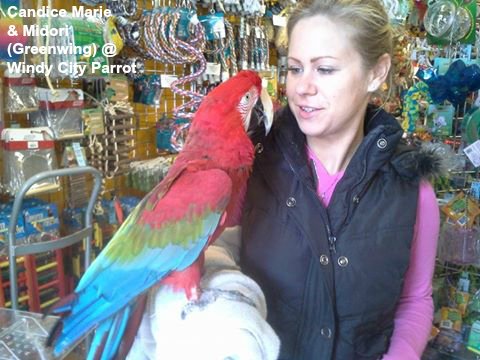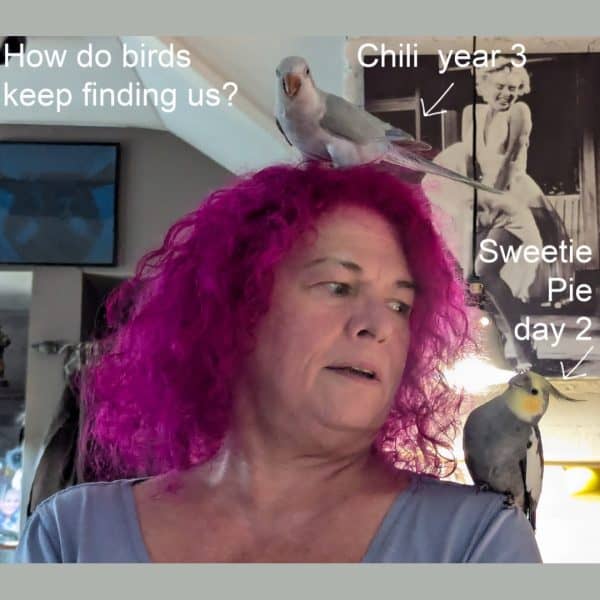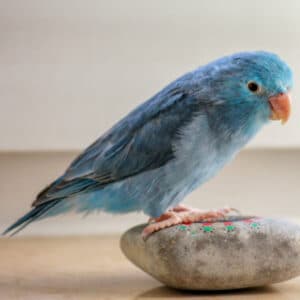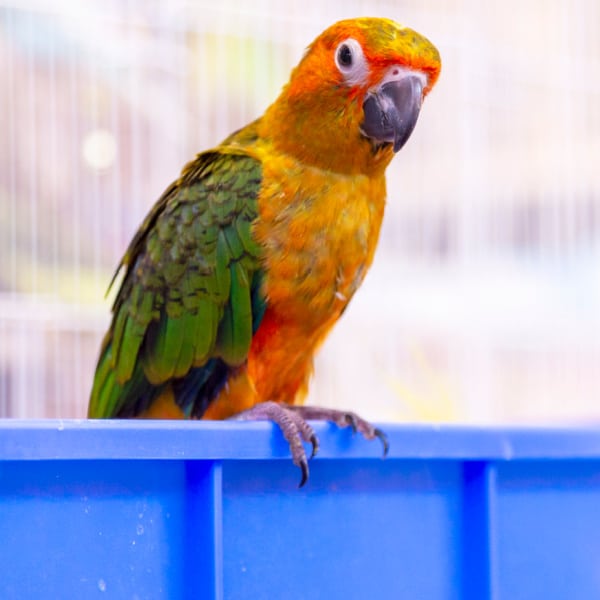Last Updated on by Mitch Rezman
Hi. I live near Philadelphia, so I need your help remotely.
I have a 34 yr. old double-yellow head that i have had since he was a baby.
He has been in an Animal Environments Cockatoo cage, almond color, dome top for 28 years.
How do I change my Amazon’s cage after 28 years?
It has plastic clips that hold it together and they are disintegrating!!
The bar spacing is almost too large, measuring at 1- 3/8″, but he is used to it so I am reluctant to go to a cage that is much smaller than 1″ spacing.
The interior bird cage dimensions are 43-1/2″ tall, 23″ deep, and 32-1/4″ wide and the food dishes are recessed.
He does have a water bowl and a treat bowl set up inside the dimensions.
I am wondering what size cage I should get for him and the color — all these years in the same shape and color — should i keep it the same for him? Customer
Hi Rebecca
Choose a cage that is no less than 32 x 23, The DYH is a larger Amazon 1-1/4 inch bar spacing would be fine – we advocate lots of change for any bird the more you change a birds environment the more they accept change.
Anything you do with your bird is going to stress the bird out for a brief period of time and he or she will get over it.
Get a cage color that looks good in your home don’t worry about pleasing or displeasing the bird – this category shows a selection that would be suitable for your bird.
New topic – Cage for a greenwing macaw
I just saw your recommendations for bar spacing
Will 5/8 inch bar spacing be dangerous for a greenwing macaw?
I sent an e-mail a few days ago, although I do not think I signed on using my user id and have not heard back from you as yet, I wonder if maybe I did not hit submit?
These are the dimensions of the cage I just ordered if it is not safe for the macaw I will use it for my blue front I had to have something ASAP for the macaw and the new Blue front that I am adopting
•Elegant wrought iron construction parrot cage.
•Animal Safe non toxic powder coated finish safe for the bird.
•Overall Dimensions: 32”L x 30”W x 70”H with an overall height (Including stand, Around seed guards, and Play Top); Cage Dimensions: 24″ x 22″ x 35″H.
•Open Play Top area with Wood Perch, double Ladders, two Stainless Steel Bowls, Slide-out top metal tray for easy cleaning.
•Bar spacing: 5/8”, Large front swing-out door with metal safety lock.
•Around metal seed guards included.
•Four Stainless Steel Cups With Swivel Solid Metal feeder doors to prevent spillage
•Natural Wooden Perch.
•Slide-out grate and bottom metal tray for easy cleaning.
•Four Swivel Casters for mobility and durability.
These are the dimensions, please let me know if this is okay for the Macaw, for now, I have a Lilac-crown and a blue front already these two new birds lost their owner to death so I will be taking them into our family.
It was very short notice so I am scrambling to get things ready. I have parrot experience but not with a macaw.
My birds are only in their cages when I work then from 6:30 until about 11 pm they are downstairs with me having dinner and playing on their playpens or on the floor with me. Hopefully, the cage is sufficient for sleeping and when I work.

Cage Dimensions: 24″ x 22″ x 35″H will be large enough for a green wing macaw. If it was only for a sleeping cage, then maybe. But it is not large enough for the time while you are at work.
You should have one no less than 40″ wide preferably larger.
A Green Wing Macaw is one of the strongest and most destructive macaws. You will need a very heavy-duty LARGE cage for it. Please do not skimp on a cage for this bird. You will regret it as it eats the cage.
Please take a look at the largest cages we have and start from there.
Thank you
Catherine
new question
I have an almost 16-year-old double yellow headed amazon.
I have got her when she was about 5 months old. She first started plucking under her wings I would guess 8 years ago.
I took her to our avian vet and I was told it was because of how she had her wings clipped. No matter how they are clipped she kept under her wings bare.
It never progressed until a year and a half ago. Now she has pulled most of her chest feathers.
Our avian vet retired a long time ago.
I tried another but she acted like she just got out of school.
I felt I knew way more about parrots then her. She used to eat a mostly seed diet with fresh fruit and veggies added. Now she is given Nutra berries, nuts, vegetables, fresh and dried fruits
The place we got her seeds (a local parrot store) closed and all we have here is generic pet stores.
She is in a very large cage for her size.I make her a variety of toys. I change them often.
I make the foraging toys that she needs to take apart to get her favorite snakes of unsalted peanuts in the shell or unsalted cashews.
She tears them apart.
I also take wood blocks and wrap them in paper so she has to tear it off to get to the wood.
I took paper shreds and weaved them in a pet store grass mat to try to encourage her to pull the shreds and not her feathers.
She has rope toys and acrylic toys too.
Her cage is in the main area.
She can see and talk to us from any room we are in. I give her a bath of warm misty water every couple of days.
She has a variety of perches including concrete, wood, and sometimes rope.
I work 8-9 hours a day, but my mother is home with her every day.
When no one is home a small TV is left on.
I let her out for about 2 hours every day. While she is out we have dinner and she is given a small crock bowl with any bird-friendly food she could eat.
I have 2 dogs but neither really bothers with her. I am wondering what else I can do for her.
We have always another bird around.
Even when I was a child we always had a bird. Mostly parakeets.
We did have a Quaker and parrotlet.
My mom’s male bird had died about a year ago.
I am not sure if the pulling has escalated because she misses another bird around or she wants a mate.
I am afraid to use a spray like bitter apple to stop this. Can you help? Thank you
Hi, Cynthia
- What kind of perch does she sleep on?
- How do you know she is a she?
- How often do you bathe her?
- Does she ever just preen?
MitchR
She usually sleeps on a concrete perch, but she has 3 other wood ones in the cage and a lava perch.
Sometimes she has a rope, but she never sleeps on it.
When I got her, I was given a DNA test that she is a female.
I bathe her every other day excepts when it is really cold.
Even with warm water, I feel wetting her down wasn’t nice. She just preens a little every day.
Author Profile
Latest entries
 The Traveling BirdJune 26, 2025Can You Name 5 Parrot Species That Are Living Wild in the USA?
The Traveling BirdJune 26, 2025Can You Name 5 Parrot Species That Are Living Wild in the USA? Bird BehaviorJune 26, 2025How is it Parrots Are Problem Solvers Social Animals and Even Use Tools?
Bird BehaviorJune 26, 2025How is it Parrots Are Problem Solvers Social Animals and Even Use Tools? Bird & Parrot AnatomyJune 25, 2025How a Tiny Chemical Modification Makes Parrots Nature’s Living Paintings
Bird & Parrot AnatomyJune 25, 2025How a Tiny Chemical Modification Makes Parrots Nature’s Living Paintings PigeonsJune 20, 2025How Do Parrots Thrive in Cities Outside Their Native Habitats?
PigeonsJune 20, 2025How Do Parrots Thrive in Cities Outside Their Native Habitats?





[email protected]
12 Feb 2024For Cynthia with the 16-year-old double yellow headed amazon, did she stop clipping the wings? If one vet thought that was a problem, are the wing feathers now fully grown?